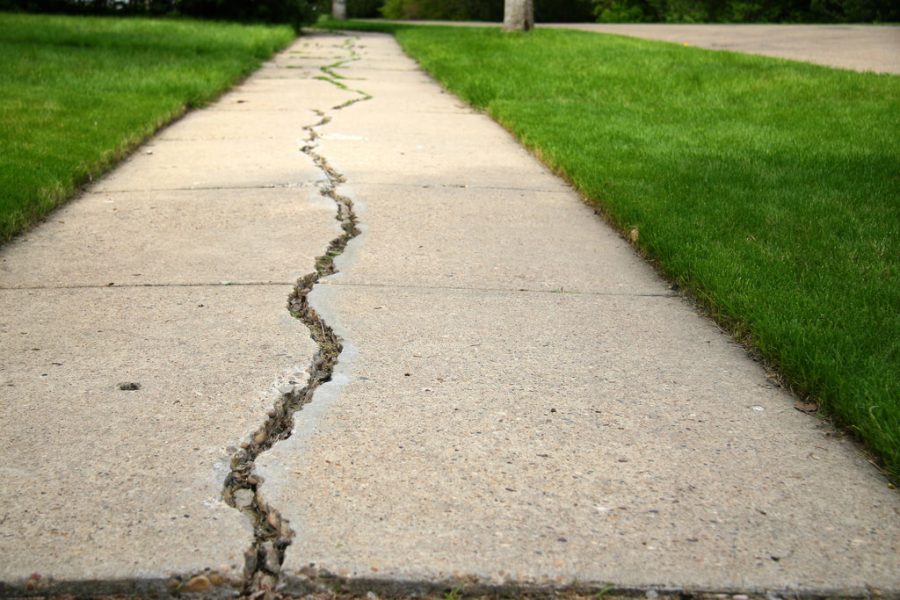The Big One: What You Need to Know About the Impending Earthquake That Will Rock the Northwest
April 19, 2017
You’re sitting in algebra, trying to write down equations before they’re erased, attempting to wrap your head around numbers and symbols as the clock ticks closer and closer to 11:15 – seven more minutes until freedom. The teacher is writing out whatever concept needs to be explained, but you’re just copying things down. You’re brain dead and ready for lunch. Your pencil stops its frantic scribbling as you glance up to see what else needs to be noted, and in that moment, your stomach lurches.
The entire class looks up, and the teacher stumbles slightly. Outside, you can hear a growing rumbling sound, while inside the classroom there is only silence. One girl says, “What was that…?”, her dread-filled voice trailing off as students share anxious glances.
Then the room starts shaking. Violently.
You are sitting in the middle of a major Cascadia fault line earthquake that has been anticipated and feared by geologists since the late 1980s.
The Cascadia fault line – stretching from northern California to Vancouver Island – is an area of seismic activity involving tectonic plates. Essentially, the North American plate is slowly sliding over the Juan de Fuca plate that lies under the Pacific Ocean, and in the past 10,000 years, there have been 40 major earthquakes, most above 8.0 in magnitude, that have shaken the Cascades. The average space of time between two quakes is 246 years; however, the last earthquake happened 317 years ago, which has begun to put scientists on edge as they try to anticipate when the next earthquake will hit.
There is still some argument, though, about when exactly the earthquake will hit — the average is, after all, just an average. The largest recorded gap between two quakes in the Cascade region was 577 years, one happening in 7,845 B.C. and the other in 7,268 B.C. However, the likelihood of a major Cascadia quake in the next 50 years is 1 in 5.
Some people may be wondering, how bad would the earthquake really be? Plenty of places have earthquakes regularly. However, at an expected magnitude of at least 8.0, this is no ordinary earthquake, and the reality is that the Pacific Northwest wouldn’t be prepared even if it was.
For instance, earthquake-prone countries like Japan, in addition to having well-established earthquake response plans in place, have systems that pick up on the first compressional wave and instantly alert the public, but the Northwest has nothing like that. Since earthquakes are otherwise impossible to predict, there would be no chance to prepare immediately before the shaking begins. This spells chaos for those traveling on trains or in the midst of surgery, power-plant operators and others working in hazardous enviornments, and anyone else going about their daily life that isn’t prepared for an earthquake.
Once the shaking does begin, destruction will reign: houses not bolted down on their foundations will slide off, dams will break, thousands of landslides will be triggered, and buildings and bridges will collapse. 1,800 major structures in Portland aren’t prepared for an earthquake, and 20 Portland Public Schools are completely unsafe.
Probably the most devastating effect would be solid ground liquefying – for instance, the Critical Energy Infrastructure Hub, a collection of fuel tanks on the west bank of the Willamette River, sits on liquefiable ground. Almost 90% of Oregon’s liquid fuel goes through these tanks, and if an earthquake happened, the tanks would tilt and rupture. This would trigger an environmental disaster and a long-term lack of fuel that would have disastrous short- and long-term effects.
After a few minutes of total destruction, the initial earthquake will be over. Buildings and bridges will have collapsed, possibly leaving no way to cross the Willamette River except by boat. Most of Oregon will have lost all of its energy, and massive quantities of liquid fuel will have been dumped into the Willamette, creating an environmental disaster. It can’t get worse, can it?
Actually, it can. About fifteen minutes after the earthquake hits, a tsunami would likely hit the Oregon Coast and destroy everything in its path. FEMA estimates that 11,000 people could die in the tsunami, 26,000 could be injured, and millions across the state would be left displaced and in desparate need of resources.
Rebuilding the affected areas would take years, and it is likely that many people will leave and bring the vibrant culture of the Pacific Northwest with them.
However, much can be done to prepare to withstand these devastating consequences.
The City Club of Portland, a well-established civic organization that weighs in on political and local government policy issues, has recently begun pushing the City of Portland to prepare for the upcoming earthquake. For instance, the Club believes that students in schools should be more thoroughly taught detailed strategies for earthquake resilience. They have also requested that the Burnside Bridge be upgraded or replaced within the next three years so that at least it will remain standing, even though most other bridges will likely fail. (You can read the full City Club report here or read the Falconer article on it here.)
If you would like to prepare for an earthquake at home, the easiest and best way to do so is to make an extensive earthquake preparedness kit. Making an earthquake preparedness kit is a fairly simple and easy task that just requires a bit of planning and time, and that will keep you less reliant on emergency services that will likely be unavailable. An earthquake preparedness kit should be stored in a waterproof container and, according to ready.gov, should include:
- One gallon of water per person per day for at least three days
- At least a three-day supply of non-perishable food
- Battery-powered or hand crank radio and batteries
- NOAA Weather Radio with tone alert and extra batteries
- Flashlight and extra batteries
- First aid kit
- Whistle to signal for help
- Dust masks
- Moist towelettes, garbage bags, plastic ties
- Wrench and pliers to turn off utilities
- Manual can opener
- Local maps
- Cell phone with charger (inverter or solar charger)
Other ways to prepare include participating in earthquake drills, creating a plan of action for your family, and retrofitting your home. If you live in an apartment building, check here to see if your building is made of unreinforced masonry. Plus, you can visit ready.gov to find out what to do in the moment when an earthquake strikes.
***
How prepared are you for an major earthquake? What questions do you have about this earthquake threat? Let us know in the comments below!
Also, keep an eye out for an upcoming story looking at how prepared La Salle is for dealing with a major earthquake.
Creative Commons photo source: https://www.flickr.com/photos/sfllaw/512670226/






Will Park • Apr 20, 2017 at 1:10 pm
I am moving to Mississippi so hopefully it won’t reach there too! Hopefully everyone stays safe here.